






| Stella
(2004) 2 channel Video/Music Installation 5.50 min (40 sec SD preview) "Stella (2004)
comes in two parts. Part one begins with two girls bouncing up and down
against a black background on what is probably a trampoline. Slow
motion and a Debussy-ish piano score of tumbling scales and arpeggios
(specially composed and performed by the artist) combine to suggest the
intoxicating fun they are having. However, we soon discover this is not
just the Billy Elliot-ish fun of bouncing up and down; it’s also the
joy of simply being together. They clearly find each other
irresistible. And this is confirmed by the closing scene where the two
of them are shown sitting on the ground, gazing into each other’s
eyes.So what is their relationship? Are they lovers? Are they identical
sisters? Is one of them the doppelgänger of the other -the kind of
perfect imaginary friend that some children like to invent? Certainly,
although they wear different coloured T-shirts and leggings, in many
ways they seem uncannily alike. Before we can get any answers, however,
the second part of the piece on the wall opposite starts up.The lack of
a sound track in part two seems to confirm that the young woman whose
face we watch has a very different mood. Like the ‘girls’ in part one
this character is also played by the artist. However, this is not
immediately apparent. On the contrary, initially she seems happy enough
to be the object of another’s (the viewer’s) gaze as she walks along.
Her jewellery, hair and make-up suggest she is at an event of some
kind, a film premiere perhaps, and she’s confident she’s looking good.
Gradually though we realize she finds the viewer’s attentions
intrusive, even threatening and the second part of the work ends with
her in obvious distress walking faster and faster, and finally breaking
into a run, in a desperate attempt to escape.It might seem therefore
from this description that Stella is a pretty straightforward exercise
in fetishistic scopophilia, albeit the narrative in each part remains
unresolved. Indeed, the moment when terrified and tearful the young
woman tries to hide from view might be seen as distinctly Hitchcockian
in character. However, it does not come across like that. This is
mostly because of the way the two parts are projected: not in a
conventional manner but one after another, on opposite walls of the
gallery. For what this does is ensure that at a certain moment we are
obliged to turn and face in a new direction: a simple device but one
that means that we feel estranged from the narrative; we have to engage
with it in a way which is active rather than passive."
Extract from the essay Video/Music by Paul Usherwood. Installation sketch
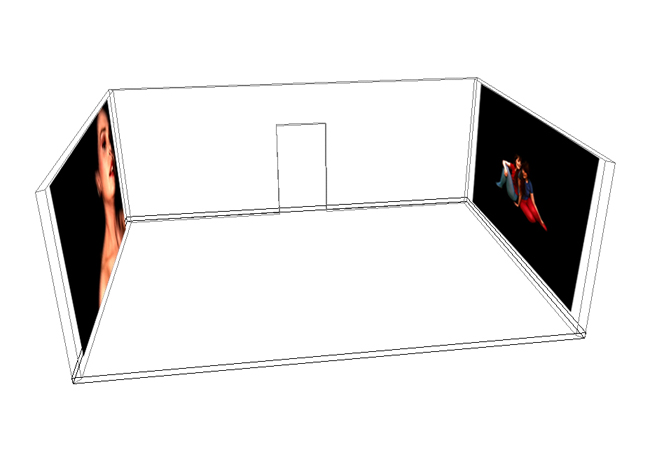 stills from projection 1 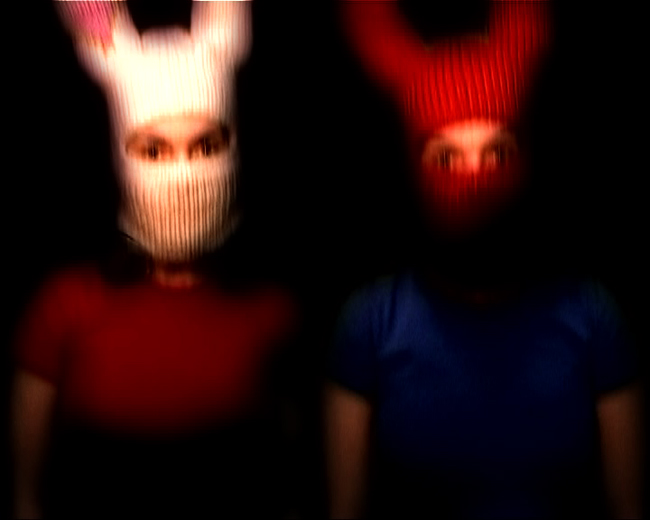 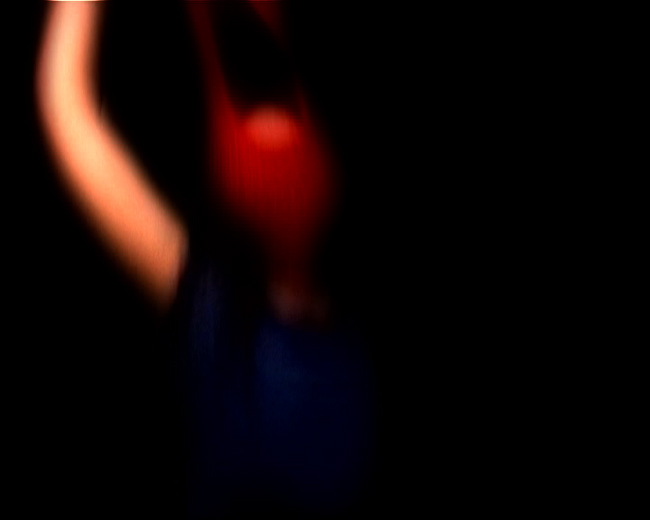 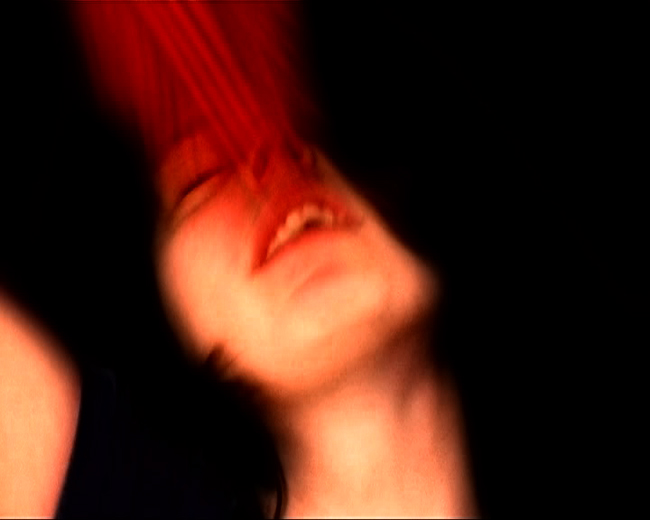 stills from projection 2 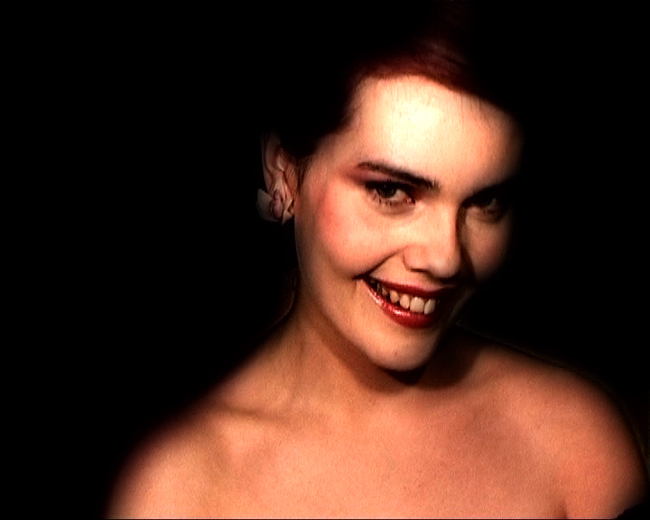 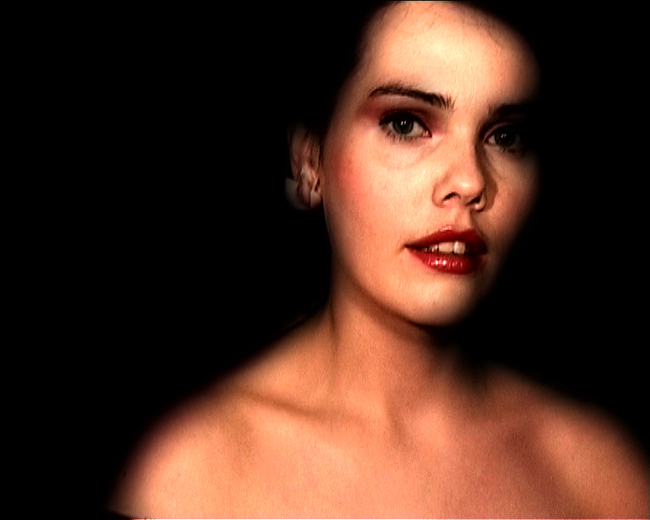  © Dodda Maggý |